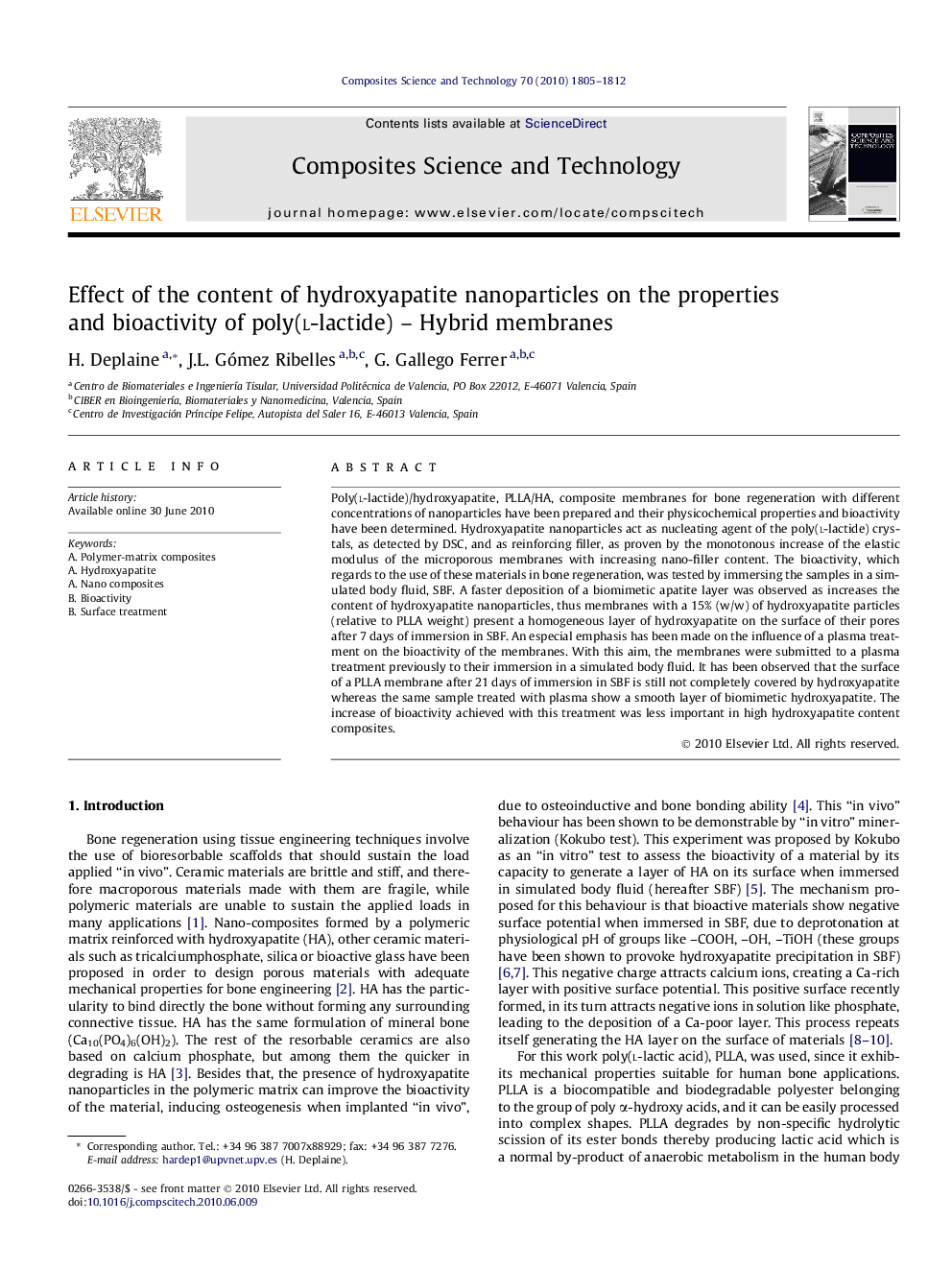| Article ID | Journal | Published Year | Pages | File Type |
|---|---|---|---|---|
| 10425142 | Composites Science and Technology | 2010 | 8 Pages |
Abstract
Poly(l-lactide)/hydroxyapatite, PLLA/HA, composite membranes for bone regeneration with different concentrations of nanoparticles have been prepared and their physicochemical properties and bioactivity have been determined. Hydroxyapatite nanoparticles act as nucleating agent of the poly(l-lactide) crystals, as detected by DSC, and as reinforcing filler, as proven by the monotonous increase of the elastic modulus of the microporous membranes with increasing nano-filler content. The bioactivity, which regards to the use of these materials in bone regeneration, was tested by immersing the samples in a simulated body fluid, SBF. A faster deposition of a biomimetic apatite layer was observed as increases the content of hydroxyapatite nanoparticles, thus membranes with a 15% (w/w) of hydroxyapatite particles (relative to PLLA weight) present a homogeneous layer of hydroxyapatite on the surface of their pores after 7Â days of immersion in SBF. An especial emphasis has been made on the influence of a plasma treatment on the bioactivity of the membranes. With this aim, the membranes were submitted to a plasma treatment previously to their immersion in a simulated body fluid. It has been observed that the surface of a PLLA membrane after 21Â days of immersion in SBF is still not completely covered by hydroxyapatite whereas the same sample treated with plasma show a smooth layer of biomimetic hydroxyapatite. The increase of bioactivity achieved with this treatment was less important in high hydroxyapatite content composites.
Related Topics
Physical Sciences and Engineering
Engineering
Engineering (General)
Authors
H. Deplaine, J.L. Gómez Ribelles, G. Gallego Ferrer,
